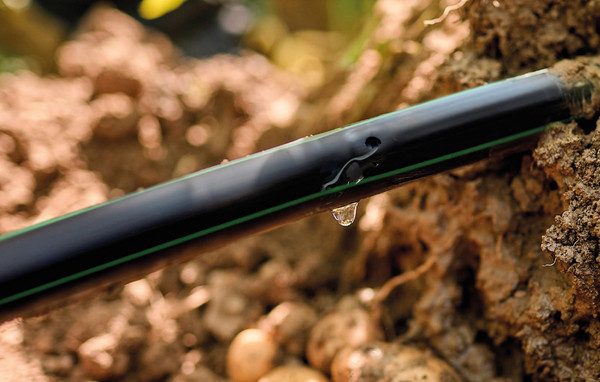
Irrigation, global warming drives innovation
The reduction in rainfall caused by climate change has significantly reduced water availability in many areas. Irrigation systems play a key role in making the best use of water resource
Artificial intelligence and the Internet of Things (IoT, ed), which are already changing the state of technology today, will be increasingly central to our industry in the near future. In just a few years, we have moved from manually controlled systems, where all the different irrigation operations still depended on human intervention, to integrated systems. Systems based on communication, as they can not only interface with each other and 'talk' to each other, but also process information from the surrounding environment by connecting to weather stations, sensor networks, satellites. This allows the system to self-regulate according to the specific conditions of soil moisture or vegetative stress of the crop, modulating the amount of water dispensed accordingly. Over the last seven years, irrigation has made a real technological leap forward.
Scientists argue that in the short and medium term, a reversal of the current climate trend is not expected. The planet's average temperatures are not expected to stop but, on the contrary, are expected to continue rising. This requires irrigation machinery manufacturers to constantly update the technological profile of their models to make them more efficient. Innovation is therefore the order of the day in this sector...
Innovation in the irrigation sector is the order of the day, as this sector is called upon to optimise the consumption of an increasingly scarce resource such as water. Indeed, it is precisely this scarcity of the resource that makes the development of more advanced solutions even more urgent. Today the technological standards are defined by integrated systems, where the ultimate decision-maker is always man, who is in any case called upon to manage the information coming from the field. However, in the medium term the baton will pass to automated systems capable of functioning without operator intervention. Within five years, in Italy too, we could see pivot wings or hose reel wagons activating themselves when the irrigation needs of a crop increase. In other countries, such as Israel, these systems are already in use
Like the agro-mechanical sector as a whole, the irrigation technology sector has a high propensity for export. Which are the main destination markets for our domestic production? In your opinion, is it possible to speak of a specificity of Italian irrigation systems?
Italian companies are world leaders in the production of reel wagons that are exported all over the world. In fact, in this market segment our manufacturers cover more than 70% of global requirements. US companies, on the other hand, are very competitive in the pivot wing sector, while Israeli companies have a strong specialisation in drip irrigation systems, which are especially recommended for countries where water resources are scarcer. Italian manufacturers, however, are also gaining market share in these two other segments.
EIMA Idrotech is the exhibition specialising in irrigation systems, which takes place as part of EIMA International. What product ranges will be on show, and which countries do you think will be most interested in this sector?
On the trade exhibition scene, EIMA International's Idrotech exhibition represents a hub of excellence and a unique venue, capable of attracting visitors and entrepreneurs from five continents, especially from emerging countries such as Canada, Scandinavian countries, Romania and the former Soviet republics of Central Asia. After all, there is no other trade exhibition in the world so specialised in irrigation technology and so representative of all the ranges available, from the systems to the related components to the software and on-board computers. And this is a role that we aim to strengthen in the years to come.








